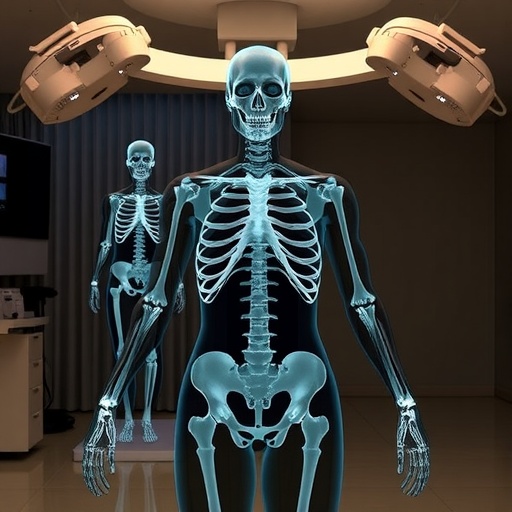In the realm of neuropsychiatric disorders, anorexia nervosa (AN) remains one of the most challenging to treat, particularly in severe, treatment-resistant cases. Recently published research sheds light on novel surgical interventions that hold promise for these patients, demonstrating significant postoperative weight restoration. This breakthrough comes from a comprehensive study focusing on the effects of stereotactic surgeries—specifically bilateral anterior capsulotomy and deep brain stimulation (DBS) targeting the nucleus accumbens (NAc). These procedures, set against the backdrop of advanced neuroimaging analysis, reveal critical brain morphometric features linked to clinical outcomes.
Anorexia nervosa is notorious for its high morbidity and resistance to conventional therapies, posing a major challenge for clinicians. Traditional pharmacological and psychological treatments often yield limited success in severe cases, prompting exploration into surgical modalities. Bilateral anterior capsulotomy, an ablative procedure, and DBS have emerged as investigational options, intervening directly within neural circuits implicated in reward, motivation, and emotional regulation. These surgeries aim to restore dysfunctional brain networks that contribute to the pathological behaviors and physiological disruptions seen in AN.
To unravel the neuroanatomical substrates underlying treatment response, researchers conducted a retrospective analysis of patients who underwent these stereotactic surgeries from 2019 to 2023. The study involved nineteen individuals with severe, refractory AN, including a subset of six patients treated with NAc DBS. Preoperative imaging data were scrutinized using voxel-based morphometry (VBM), a sophisticated neuroimaging technique that quantifies differences in gray matter volume across the brain. This method enabled the comparison of the brain morphology of AN patients to that of healthy controls, and further investigation into regions potentially predictive of postoperative weight recovery.
Remarkably, the study found a pronounced increase in body mass index (BMI) among operated patients, with averages rising dramatically from a critically low 13.4 kg/m² before surgery to 20.7 kg/m² after intervention. This substantial weight gain underscores the potential efficacy of surgical approaches where conventional treatments have failed. The translational implication is significant, suggesting that modulating specific neural circuits can directly impact the core physiological symptom of AN—severe underweight status.
VBM analyses revealed extensive reductions in gray matter volume in patients prior to surgery, encompassing key brain areas such as the cerebellum, thalamus, temporal lobe, orbital frontal gyrus, and sensorimotor cortex. These findings align with previous neuroimaging studies documenting widespread brain atrophy and structural alterations in AN, reflecting the systemic impact of prolonged malnutrition and neurobiological dysregulation. Notably, the involvement of regions linked to motor control, emotional processing, and cognitive functions substantiates the complex neural dysfunction inherent in AN.
Intriguingly, the relationship between postoperative BMI improvement and brain volume exhibited nuanced patterns. While no regions survived corrections for multiple statistical comparisons, uncorrected analyses pointed toward positive correlations between weight gain and the volumes of the left caudate and right middle frontal gyrus. These areas are associated with executive functions, reward processing, and goal-directed behaviors—domains often impaired in AN. Conversely, a negative correlation was observed with volumes in the right supplementary motor area, right parahippocampal gyrus, right precuneus, and left cerebellum, hinting at intricate, region-specific contributions to clinical recovery.
The findings intimate that the structural integrity of particular brain regions may serve as biomarkers for predicting postoperative outcomes in AN patients undergoing neurosurgical interventions. Such insights pave the way for precision medicine approaches, where imaging profiles could guide patient selection and optimize therapeutic strategies. However, due to the study’s limited sample size and retrospective design, these conclusions warrant cautious interpretation and necessitate validation through larger, prospective trials.
From a mechanistic perspective, DBS of the nucleus accumbens, a core component of the brain’s reward circuitry, likely modulates dysfunctional motivational drives contributing to the persistence of restrictive eating behaviors. Similarly, anterior capsulotomy—disrupting pathological connectivity within the internal capsule—might alleviate maladaptive cognitive-emotional loops perpetuating anorexic pathology. The convergence of ablative and neuromodulatory effects on weight restoration illuminates the therapeutic value of targeted brain circuit manipulation.
Clinically, these surgical procedures represent a paradigm shift for severe AN, offering hope where therapeutic nihilism has predominated. They underscore the necessity of interdisciplinary collaboration among psychiatrists, neurosurgeons, and neuroimaging specialists to develop and refine these interventions. Meticulous patient selection, comprehensive risk-benefit assessment, and longitudinal monitoring remain paramount to maximizing safety and efficacy.
The study also highlights critical gaps in understanding the neurobiological underpinnings of AN recovery. Future investigations must integrate multimodal imaging, neurophysiological recordings, and behavioral assessments to elucidate the dynamic changes driving clinical improvement. Moreover, expanding sample sizes and standardizing surgical protocols will enhance reproducibility and generalizability across centers and populations.
Ethical considerations pose unique challenges in employing invasive neurosurgical treatments for psychiatric disorders. Researchers emphasize the importance of informed consent, rigorous ethical oversight, and ongoing dialogue with patients and families. Balancing innovation with patient welfare is essential to fostering responsible translational neuroscience.
In conclusion, the study’s findings mark a milestone in the evolving landscape of anorexia nervosa treatment. By combining stereotactic surgeries with cutting-edge neuroimaging analyses, the research opens new avenues for understanding and combating this devastating illness. As the field advances, these insights hold potential not only for weight restoration but also for broader neuropsychiatric applications where dysfunctional brain circuits sustain illness.
With further validation and refinement, neurosurgical interventions targeting the neural substrates of anorexia nervosa could become indispensable tools in the psychiatric arsenal. Their success depends on continued integration of clinical expertise, technological innovation, and ethical stewardship, ultimately striving to improve outcomes for the most severely affected patients.
Subject of Research: Treatment outcomes and neuroanatomical correlates of stereotactic surgery in severe anorexia nervosa patients.
Article Title: Weight restoration in patients with anorexia nervosa after stereotactic surgery and brain morphometric insights.
Article References:
Wang, F., Liu, W., Paerhati, H. et al. Weight restoration in patients with anorexia nervosa after stereotactic surgery and brain morphometric insights. BMC Psychiatry 25, 474 (2025). https://doi.org/10.1186/s12888-025-06890-5
Image Credits: AI Generated




